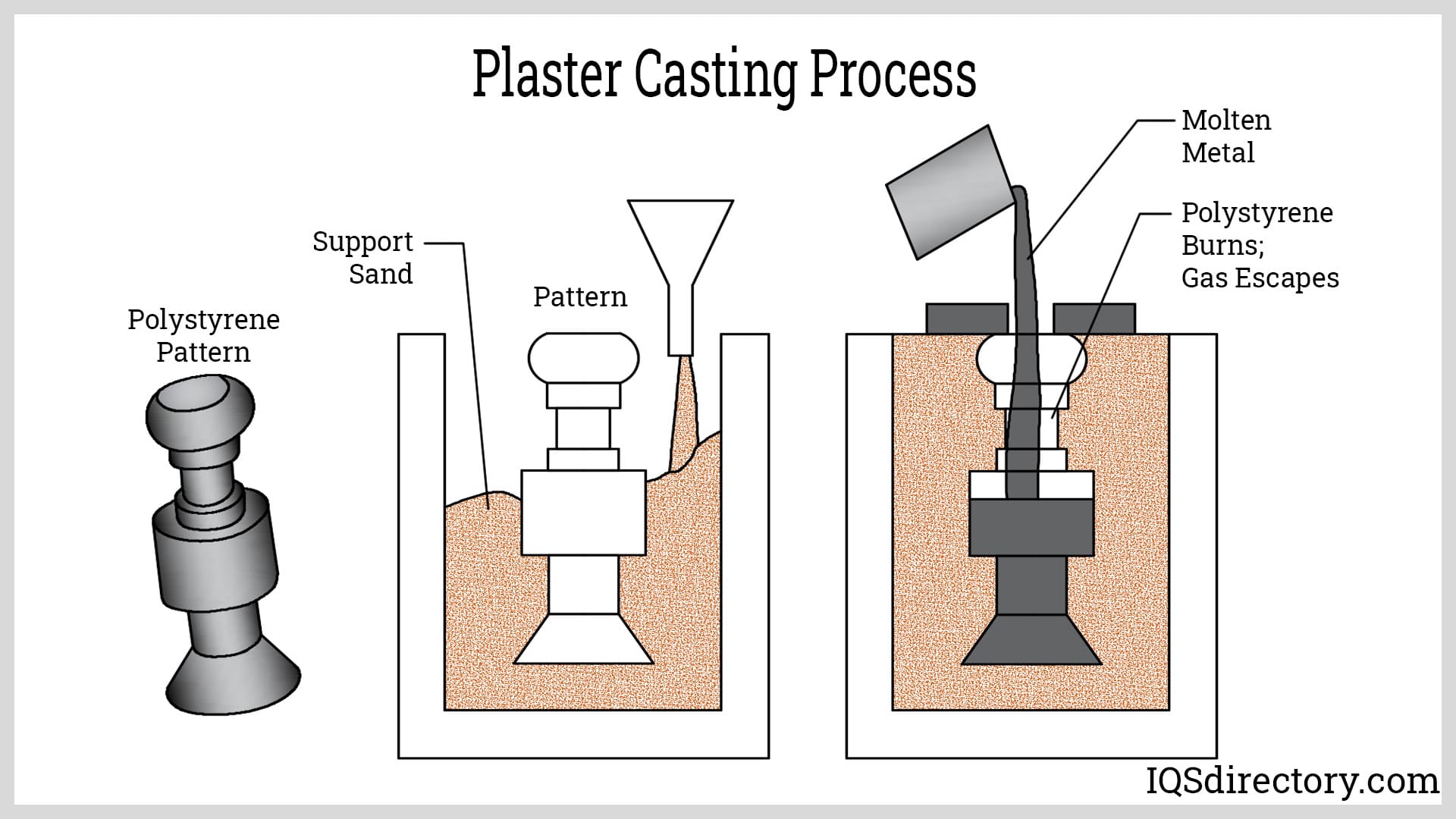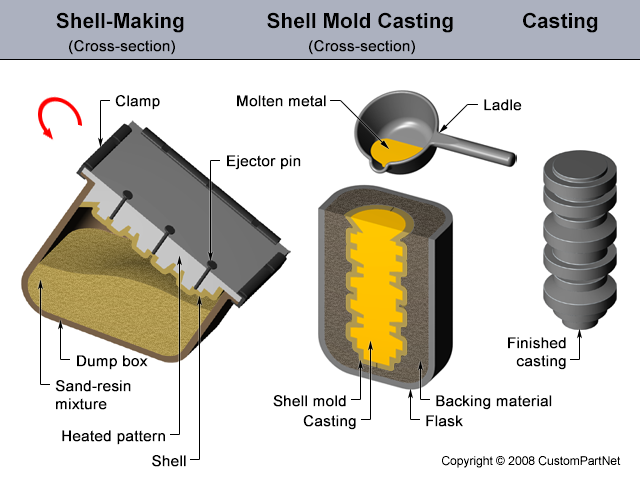Wisconsin Aluminum Foundry and its commitment to precision in metal production
Wiki Article
A Deep Dive Into the Various Kinds of Metal Casting and Their Utilizes
Metal Casting incorporates numerous methods, each customized for certain applications and requirements. From the cost-effective sand casting method to the precision of financial investment casting, each process has distinct benefits. Pass away casting stands out in high-volume production scenarios, while lost foam casting presents cutting-edge style opportunities. Furthermore, permanent mold and mildew casting is recognized for its durability. Understanding these approaches opens a window right into their useful usages and effects in various sectors. What exists under the surface area of these casting methods?Sand Casting: A Affordable and flexible Technique
Different casting approaches exist, sand spreading continues to be one of the most cost-efficient and versatile strategies in the metalworking sector. This technique employs a blend of sand and a binding agent to develop mold and mildews, enabling the manufacturing of components in diverse sizes and shapes. Sand casting is specifically helpful for small to medium production runs, as it requires marginal ahead of time financial investment in tooling contrasted to other spreading strategies.The procedure starts with the development of a mold and mildew, where liquified metal is put in to develop the preferred things once cooled down. Its flexibility allows using different steels, consisting of steel, iron, and light weight aluminum. In addition, sand casting can accommodate complex geometries, making it suitable for a variety of applications, from automobile elements to intricate imaginative pieces. Overall, sand casting's performance and versatility solidify its significance in the manufacturing landscape.
Investment Casting: Accuracy and Detail for Complex Forms
Investment spreading attracts attention as a technique renowned for its ability to generate extremely outlined and elaborate parts. This process involves producing a wax pattern that is covered with a ceramic shell, which is then heated up to eliminate the wax and solidify the covering. The outcome is a specific mold and mildew that can catch intricate geometrical shapes with impressive precision.This casting strategy is specifically valuable for generating get rid of slim walls, great features, and limited resistances, making it optimal for industries such as aerospace, automobile, and clinical tools. Financial investment spreading suits a selection of steels, including stainless steel, light weight aluminum, and titanium, making it possible for manufacturers to satisfy certain material requirements.
In addition, the process decreases machining requirements post-casting, which can boost effectiveness and lower manufacturing costs. In general, financial investment spreading is a favored selection for applications where accuracy and detail are extremely important.
Die Spreading: High-Volume Production With Excellent Surface Area Complete

Die spreading is a highly effective production procedure that masters creating huge quantities of metal parts with extraordinary surface coatings. This method involves requiring liquified metal right into a mold cavity under high stress, enabling quick production cycles and harmony in the ended up items. Typically used products consist of zinc, light weight aluminum, and magnesium, which supply outstanding mechanical homes and rust resistance.
Die casting is particularly beneficial for industries such as automotive, electronics, and customer goods, where precision and high quality published here are extremely important. The process makes it possible for detailed designs, reducing the need for additional machining and completing procedures. In addition, the smooth surface areas produced through die casting often require very little post-processing, leading to lower general manufacturing prices. As a high-volume production technique, die casting is excellent for suppliers seeking performance without jeopardizing on high quality, making it a preferred option for countless applications throughout various markets.
Lost Foam Casting: Cutting-edge Strategy for Intricate Styles
Lost foam casting revolutionizes the production of complex metal components by using a special procedure that eliminates the need for traditional mold and mildews. Rather than traditional mold-making, this approach uses a foam pattern that is covered with a refractory product. As soon as the pattern is set, liquified steel is poured directly right into the mold, creating the foam to leave and vaporize behind an exact tooth cavity for the steel to fill. This cutting-edge method permits intricate layouts and thorough functions that might be challenging to achieve with other casting approaches.Furthermore, shed foam spreading can lower waste and energy consumption, making it an eco-friendly choice. Industries such as aerospace and automobile benefit substantially from this technique, as it sustains the creation of click reference lightweight parts with complicated geometries. Overall, lost foam spreading stands apart for its capability to supply top notch, personalized metal components efficiently.
Long-term Mold Spreading: Longevity and Consistency in Steel Parts
Irreversible mold casting is a highly efficient approach for generating sturdy and constant metal components, leveraging recyclable mold and mildews that are typically made from steels such as iron or steel. This casting procedure involves putting liquified steel right into these mold and mildews, which are preheated to improve product high quality and lower flaws. Making use of reusable molds not only minimizes waste yet also enables greater manufacturing prices, making it economically advantageous for producers.The resulting components display excellent dimensional accuracy and surface finish, making them perfect for applications in vehicle, aerospace, and commercial equipment. Additionally, irreversible mold and mildew spreading can suit a range of alloys, further increasing its flexibility. The durability of the cast components is boosted because of the controlled air conditioning prices that promote better grain frameworks. Generally, this spreading method stands out for its capability to produce top quality steel parts that fulfill strenuous performance criteria, guaranteeing dependability sought after settings.
Often Asked Questions
What Products Can Be Made Use Of in Different Metal Casting Processes?

Different products can be utilized in Metal Casting processes, consisting of light weight aluminum, zinc, iron, and bronze. Each product offers special residential or commercial properties, influencing the spreading technique's efficiency, strength, and viability for various applications in production.
Just How Do Casting Approaches Influence the Mechanical Features of Metals?
Casting approaches significantly affect the mechanical residential properties of steels, affecting factors like ductility, strength, and solidity. Variations in cooling rates and mold materials can bring about different microstructures, inevitably affecting the performance of the end product.What Are the Environmental Effects of Steel Casting Procedures?
Metal Casting processes can cause air and water pollution, resource exhaustion, and significant power consumption (Aluminum Castings). Furthermore, the generation of waste products and greenhouse gas discharges considerably affects the environment and adds to environment modificationHow Do You Pick the Right Casting Approach for a Project?
Choosing the ideal casting approach includes examining project demands, product buildings, intricacy, and manufacturing quantity. Factors like expense efficiency, finish top quality, and preparation also play essential duties in determining the most ideal technique.What Safety and security Safety Measures Should Be Taken Throughout Metal Casting Procedures?
Throughout Metal Casting procedures, safety and security precautions include wearing safety gear, guaranteeing proper air flow, performing equipment evaluations, maintaining a clean office, and having emergency situation protocols in location to check these guys out manage prospective hazards like burns or harmful fumes.From the affordable sand casting approach to the accuracy of financial investment spreading, each procedure has special advantages. Die spreading is a very effective production process that stands out in producing huge quantities of steel components with phenomenal surface area finishes. Lost foam casting reinvents the production of complicated steel parts by making use of an one-of-a-kind procedure that removes the demand for typical molds (Wisconsin Aluminum Foundry). Long-term mold casting is a very reliable technique for generating regular and durable steel components, leveraging recyclable molds that are normally made from steels such as iron or steel. Numerous materials can be used in Metal Casting processes, consisting of light weight aluminum, bronze, zinc, and iron
Report this wiki page